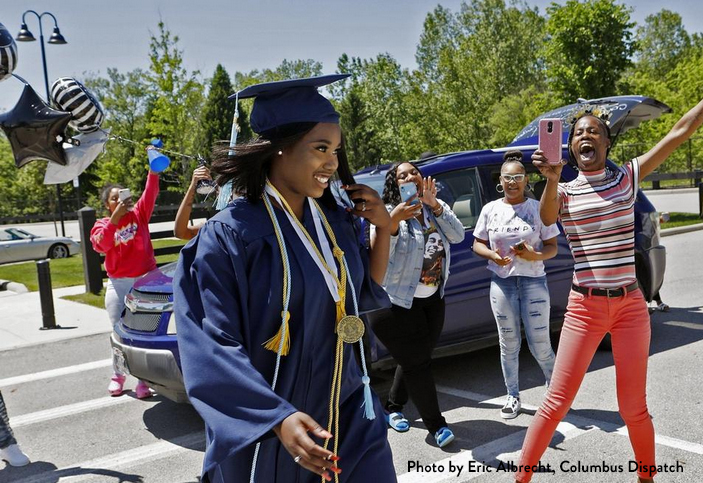
Be The Change You Want to See – Kipp Columbus
by Terry Ryan
The images over the last month have been hard, sad, and disheartening to watch. Start with the callous murder of George Floyd in Minneapolis, move to watching greedy opportunists loot stores and burn out community businesses while smiling for social media, then watch a military helicopter push legitimate protesters away from Lafayette Square in Washington, D.C.
What kept me from crying and despairing about the country I love was an article from Columbus, Ohio, describing the first graduating class of forty-eight seniors from the KIPP Columbus charter school. These graduates are young people of color, and many will be the first in their families to go on to college. The Columbus Dispatch reported that one of them, Assiatou Diallo by name, will “attend Smith College in Northampton, Massachusetts, to pursue a double major in government and economics, with a minor in Africana studies. Her goal is to be an activist for the black community.”
KIPP Columbus opened its doors in 2008 to fifty fifth-graders. I had the good fortune of working for Fordham in Ohio at the time and being involved in helping to launch the school as its charter authorizer. The first year was challenging, to say the least, with moments along the way when it looked as if the school might not survive its start-up phase. Opening a charter school in Ohio in 2008, even with the support and engagement of a strong national partner like KIPP, was fraught with peril.
It was the year of the Great Recession. Then-Governor Strickland had proposed an anti-school choice budget in 2007 (it died in the state senate). Recruiting top talent to work in a start-up charter in Columbus was no easy proposition. Teach for America, an important talent pipeline for high-performing models like KIPP, was still three years away from being approved to operate in the Buckeye State. And there were a number of charter-friendlier states for school operators, leaders, and teachers to go than Ohio.
But Columbus is a great city, and its forward-looking (and marvelously diverse) leaders—business, community, political, legal, and philanthropic—wanted a KIPP school for its neediest students. The leadership group that ultimately became the KIPP Columbus board represented different races, political affiliations, and personal histories. It was all very heartland-of-America.
After one board meeting, the situation looked grim. The first two school leaders left during the first year—one for health reasons, the other because what then looked like a superior opportunity opened in a different state. I said quietly to some board leaders that, if they chose to close the school, Fordham would support the decision and help them do it responsibly. Their response was a mix of anger and incredulity. The board made clear that the school would not only continue, but that it would ultimately excel. They were in it for the long haul, determined to succeed because the children of Columbus needed the opportunities that a high-performing KIPP school promised.
So as I watch today’s turmoil and trauma, I still have faith in the American experiment and in our ability to do better. I’ve seen the possibilities up close in schools like KIPP Columbus. Americans can do great things when they come together, work together, and cross barriers to find solutions to the inequalities and injustices of our times. It takes great leaders like those who came together in Columbus in 2008 to launch a public charter school that has helped that community’s neediest student populations go off to college to learn how to become “an activist for the black community.” Education is a critical part of America getting better and being better.
—



